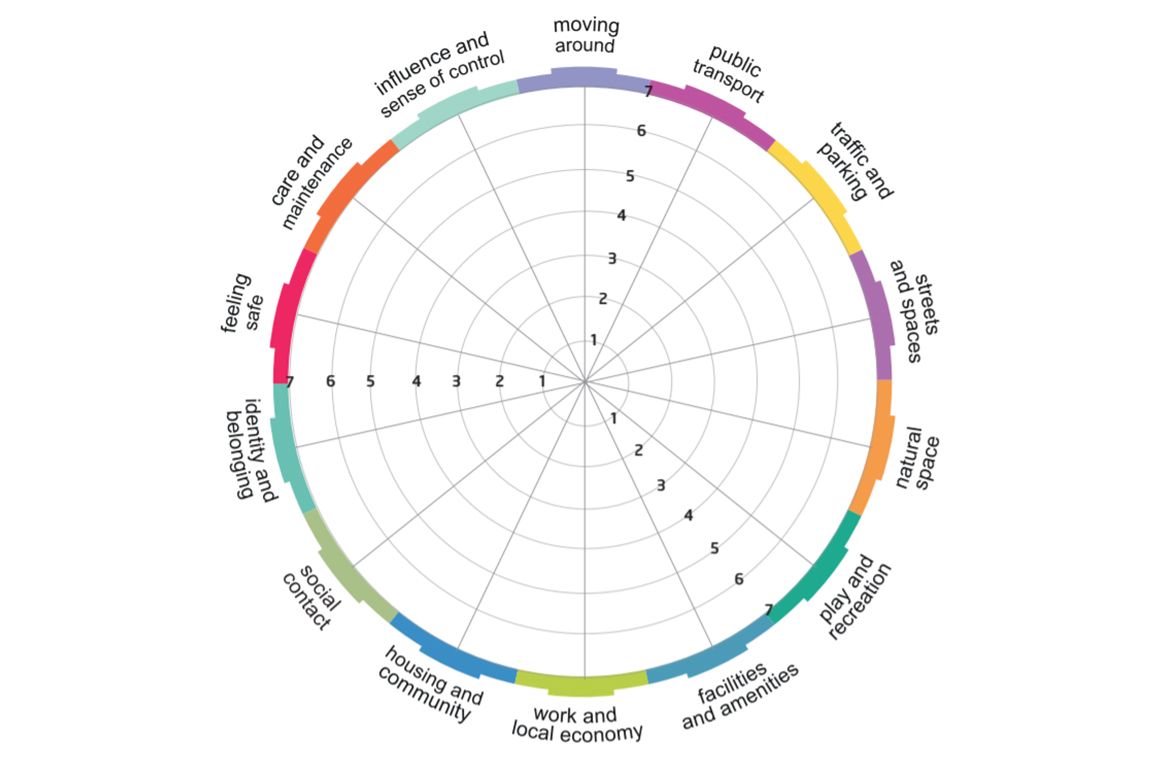Eilidh Mackintosh, Planning Project Officer at the IS, and Sam Whitmore from Public Health Scotland take a closer look at two key tools for creating better places.
The Place Standard Tool and Place and Wellbeing Outcomes are seeds from the same two trees, namely the Good Places, Better Health strategy on health and environment (2008) and Creating Places: A policy statement on architecture and place for Scotland (2013).
Following these two key publications, representatives from Public Health Scotland, Architecture & Design Scotland, the Scottish Government, and the planning department of Glasgow City Council came together to jointly develop the Place Standard Tool.
Place Standard Tool
The Place Standard Tool was thoroughly piloted and launched in December 2015, and in 2017 it was awarded the Royal Town Planning Institute Award for Excellence in Planning for Wellbeing.
The purpose of the Place Standard Tool is to support the delivery of high-quality places and to maximise the potential of the physical, social, and economic environments in supporting a health and wellbeing agenda. This is achieved by articulating what makes quality and sustainable environments in which people can live, work, and enjoy leisure opportunities.
The core function of the Place Standard Tool is to act as an assessment resource that involves bringing people (communities and relevant professionals) together to evaluate the strengths and challenges that exist in a particular place, as a catalyst for action. It is underpinned by 14 themes that cover both the physical and social aspects of a place that affect health and wellbeing.

Place and Wellbeing Outcomes
The Place and Wellbeing Outcomes were developed by representatives from Public Health Scotland, COSLA, Directors of Public Health, Improvement Service, Health Improvement Managers Network, Heads of Planning Scotland, and Edinburgh University.
Based on evidence from the World Health Organisation and other public health bodies in the United Kingdom, they established a set of outcomes for Scotland that drew on the evidence base that supported the Place Standard; these became the Place and Wellbeing Outcomes. The outcomes are all the characteristics of a place that allow those who live, work, and relax there to thrive. The outcomes are for all stakeholders to take collaborative action on delivering in every place. They fall under five overarching themes of movement, spaces, resources, civic, and stewardship.

Place and Wellbeing Assessments
From this, the Place and Wellbeing Assessments process was developed. A Place and Wellbeing Assessment aims to enable a conversation about a plan or strategy or proposal, particularly, how that plan, strategy or proposal is going to impact on place. Therefore, determining how much a plan is contributing towards those outcomes.
The Shaping Places for Wellbeing Programme stemmed from the desire to use the outcomes to ensure the impact of decisions consider every aspect of place so to fully understand the contribution of our places as part of the preventative solution when addressing the range of priorities facing local councils and local health boards across Scotland. As such, Place and Wellbeing Assessments are at the core of the Shaping Places for Wellbeing Programme.
How the Place Standard Tool and the Place and Wellbeing Outcomes align
Whilst both the Place Standard Tool and the Place and Wellbeing Outcomes are linked by the same set of evidence that sits behind them, the Place Standard Tool is used as a tool to enable a conversation about place; specifically, a conversation about how to assess a place on how much it is meeting on its 14 themes. In comparison, the Place and Wellbeing Outcomes represent a desired reality that we all need to strive to reach. Both support stakeholders and decision makers to consider the key characteristics that our places need to thrive and enable health and wellbeing in our communities.